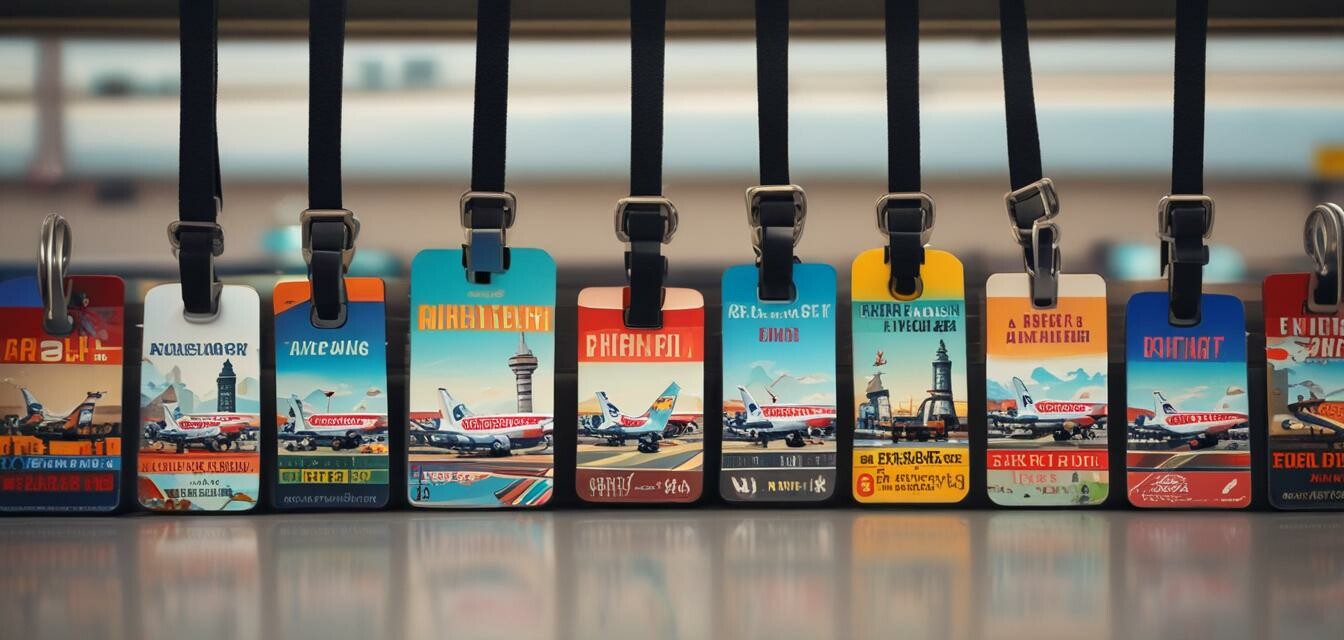
Best Practices for Luggage Tagging and Identification
Key Takeaways
- Proper luggage tagging enhances security and retrieval.
- Use durable tags with clear identification.
- Implement unique identifiers to differentiate your bags.
- Keep your contact information updated.
- Consider using digital options for tracking.
When preparing for your journey, ensuring that your luggage is easily identifiable is crucial. With crowded airports and various similar looking bags, properly tagging and identifying your luggage can save you from frustration and anxiety. This article presents comprehensive tips and best practices to effectively tag your luggage, securing it and ensuring its easy retrieval.
Why luggage tagging is important
Luggage tagging serves multiple important functions:
- Identifiability: Distinguish your bag from others easily.
- Security: Unauthorized individuals cannot claim your luggage.
- Faster Retrieval: Quick identification leads to quicker recovery if misplaced.
Types of luggage tags
Choosing the right type of luggage tag can make a significant difference. Here are the most common types:
| Tag Type | Description | Pros | Cons |
|---|---|---|---|
| Classic Paper Tags | Basic tags with your information written on them. | Inexpensive and widely available. | Can easily tear or get wet. |
| Plastic Tags | Durable plastic options that can withstand rough handling. | Weather-resistant and harder to damage. | Can be bulkier than paper options. |
| Metal Tags | Stylish metal tags often embossed with information. | Highly durable and stylish. | More expensive than other options. |
| Digital Tags | Tags with QR codes or barcodes linked to your contact information. | Easy retrieval and tracking via apps. | Can require a smartphone for full use. |
How to effectively tag your luggage
Follow these best practices to ensure your luggage tags are effective:
- Use durable materials: Select tags made from sturdy materials like plastic or metal.
- Clearly display your contact information: Ensure your name, phone number, and email address are readable.
- Select unique designs: Opt for tags that stand out in color or design to make identification easier.
- Include a unique identifier: Incorporate a unique code or message that sets your bag apart.
- Update your information regularly: If you change your phone number or move, ensure your tag reflects that.
- Consider multiple tags: Use more than one tag on your luggage to increase the chances of identification.
Additional tips for luggage identification
Additional Tips
- Use brightly colored luggage to help identify your bag quickly.
- Add a distinctive strap or ribbon to your luggage.
- Photograph your luggage and its contents, and save the image on your phone for reference.
- Use a luggage scale to ensure you stay within weight limits, avoiding the need to open your bag in public.
- Consider investing in a smart luggage tracker for added peace of mind.
Conclusion
Proper luggage tagging and identification are key to ensuring a hassle-free travel experience. Whether you're frequently flying for business or planning a leisurely vacation, implementing these best practices will significantly enhance your luggage security and ease of retrieval.
Related resources
Looking to enhance your travel gear? Explore our product categories: